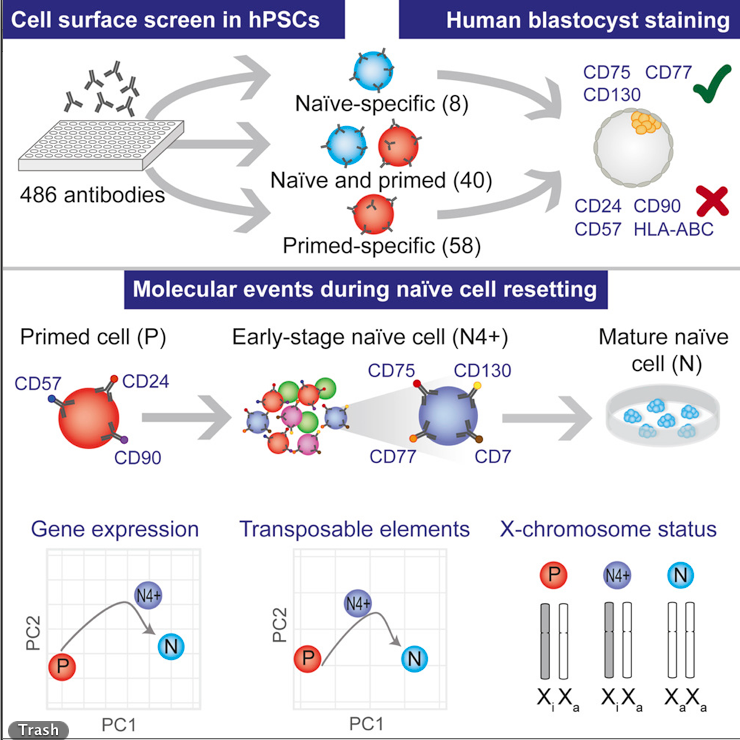|
|||||||||||||||
|

CLICK ON weeks 0 - 40 and follow along every 2 weeks of fetal development
|
||||||||||||||||||||||||||||
Earliest embryonic stem cells identified A new type of pluripotent stem cell genuinely corresponds to a more immature, pre-implantation stage, and has been identified by researchers at the Karolinska Institutet in Germany. These stem cells can now be cultivated in a laboratory and are of great scientific importance as they have the potential to build cell types difficult to create from classical stem cells. They may also be easier to cultivate and manipulate in laboratory experiments.
A few years ago, it was discovered there are two stages for human pluripotent stem cells, corresponding to pre-implanted and post-implanted embryonic cells. Although the classical stem cells used in regenerative medicine are isolated from a pre-implanted embryo, they reflect a mature stage more similar to a post-implantation embryo. Fredrik Lanner's research team at Karolinska Institutet and with their colleagues in Peter Rugg-Gunn's team at Cambridge's Babraham Institute in the United Kingdom, have now developed a tool for separating the two stem cell stages. They have screened combinations of antibodies that bind to specific proteins on the surface of immature stem cells as well as antibodies that bind to specific proteins on surfaces of mature stem cells, which can be used in flow cytometry — a common laboratory technique used to sort cells.
Mature embryonic stem cells cultivated in the laboratory can, under the right conditions, be 'backed up' in development to a more immature stem cell stage. Researchers tested their technique on cultivated stem cells from both mature and immature stages, and on donated human embryos left over from IVF treatments.
"It is at the point of implantation that the stem cells go through this change and 'mature', which is also a highly critical time for the embryo," says Dr Lanner. "These cells are therefore also of interest to infertility research." Abstract The study was financed by several bodies, including the Swedish Research Council, the Ragnar Söderberg Foundation, the Swedish Foundation for Strategic Research, the Knut and Alice Wallenberg Foundation, the Centre for Innovative Medicine (CIMED) and the Ming Wai Lau Centre for Reparative Medicine. Publication: 'Comprehensive Cell Surface Protein Profiling Identifies Specific Markers of Human Naive and Primed Pluripotent States', Amanda J. Collier, Sarita P. Panula, John Paul Schell, Peter Chovanec, Alvaro Plaza Reyes, Sophie Petropoulos, Anne E. Corcoran, Rachael Walker, Iyadh Douagi, Fredrik Lanner, Peter J. Rugg-Gunn. Cell Stem Cell, online 23 March 2017, doi: 10.1016/j.stem.2017.02.014. |
Apr 5, 2017 Fetal Timeline Maternal Timeline News News Archive  Screening for antigens that identify immature from mature stem cells. Image Credit: Fredrik Lanner, Karolinska Institutet
|
||||||||||||||||||||||||||||

